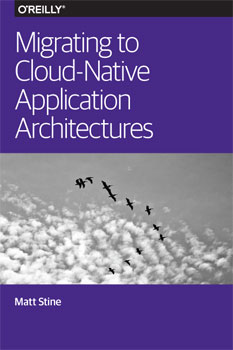- Apple’s Incredible Platform Advantage (Steve Cheney) — the best people in chip design no longer want to work at Intel or Qualcomm. They want to work at Apple. I have plenty of friends in the Valley who affirm this. Sure Apple products are cooler. But Apple has also surpassed Intel in performance. This is insane. A device company – which makes CPUs for internal use – surpassing Intel, the world’s largest chip maker that practically invented the CPU and has thousands of customers.
- Data Center’s Days are Numbered — Adrian Cockroft says, the investments going into bolstering security on AWS and other clouds are set to pay off to the point where within five years, “it will be impossible to get security certification if you’re not running in the cloud because the tools designed for data centers are sloppily put together and can’t offer the auditing for PCI and other regulators.”
- A Peek Inside IBM’s R&D Lab — IBM still has a physics department, but at this point, almost every physicist is somehow linked to a product plan or customer plan.
- Building Scalable Stateful Services (High Scalability) — elucidation of a talk by Caitie McCaffrey (YouTube), tech lead for observability at Twitter.
"cloud" entries

Swarm v. Fleet v. Kubernetes v. Mesos
Comparing different orchestration tools.
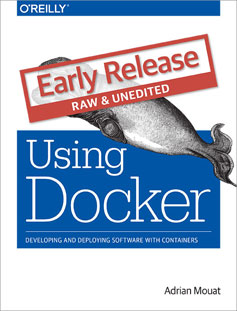
Buy Using Docker Early Release.
Most software systems evolve over time. New features are added and old ones pruned. Fluctuating user demand means an efficient system must be able to quickly scale resources up and down. Demands for near zero-downtime require automatic fail-over to pre-provisioned back-up systems, normally in a separate data centre or region.
On top of this, organizations often have multiple such systems to run, or need to run occasional tasks such as data-mining that are separate from the main system, but require significant resources or talk to the existing system.
When using multiple resources, it is important to make sure they are efficiently used — not sitting idle — but can still cope with spikes in demand. Balancing cost-effectiveness against the ability to quickly scale is difficult task that can be approached in a variety of ways.
All of this means that the running of a non-trivial system is full of administrative tasks and challenges, the complexity of which should not be underestimated. It quickly becomes impossible to look after machines on an individual level; rather than patching and updating machines one-by-one they must be treated identically. When a machine develops a problem it should be destroyed and replaced, rather than nursed back to health.
Various software tools and solutions exist to help with these challenges. Let’s focus on orchestration tools, which help make all the pieces work together, working with the cluster to start containers on appropriate hosts and connect them together. Along the way, we’ll consider scaling and automatic failover, which are important features.


Four short links: 13 October 2015
Apple Chips, Death of the Data Center, IBM R&D, and Stateful Services


Four short links: 10 July 2015
King Rat Brain, Emojactions, Dead Eye, and Cloud Value
- Computer of Wired-Together Rat Brains — this is ALL THE AMAZING. a Brainet that allows three monkeys connected at the brain to control a virtual arm on screen across three axes. […] Nicolelis said that, essentially, he created a “classic artificial neural network using brains.” In that sense, it’s not artificial at all. (via Slashdot)
- Reactions — Slack turns emoji into first-class interactions. Genius!
- Pixar’s Scientific Method — If you turn your head without moving your eyes first, it looks like you’re dead. Now there’s your uncanny valley.
- AWS CodePipeline — latest in Amazon’s build-out of cloud tools. Interchangeable commodity platforms regaining lockin via higher-order less-interchangeable tooling for deployment, config, monitoring, etc.

The importance of orchestration in transforming legacy IT
How orchestration differs from automation in the enterprise cloud.
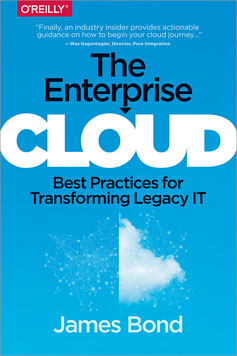
Buy The Enterprise Cloud.
The orchestration of workflow processes is an essential part of cloud computing. Without orchestration, many of the benefits and characteristics of cloud computing cannot be achieved at the price point that cloud services should be offered. Failure to automate as many processes as possible results in higher personnel labor costs, slower time to deliver the new service to customers, and ultimately higher cost with less reliability.
What is meant by automation? Automation is technique used in traditional data centers —and critical in a cloud environment — to install software or initiate other activities. Traditional IT administrators use sequential scripts to perform a series of tasks (e.g. software installation or configuration); however, this is now considered an antiquated technique in a modern cloud-based environment. Orchestration differs from automation in that it does not rely entirely on static sequential scripts but rather sophisticated workflows; multiple automated threads; query-based and if/then logic; object-oriented and topology workflows; and even the ability to back-out a series of automated commands if necessary.
Orchestration can best be explained through a typical use case example of a customer placing an order within their cloud service web-portal, and following the steps necessary to bring the service online. The actions below illustrate a very high level scenario where the cloud management software performs the orchestration:

Building applications in Azure
Identifying the key requirements of a web application cloud architecture.
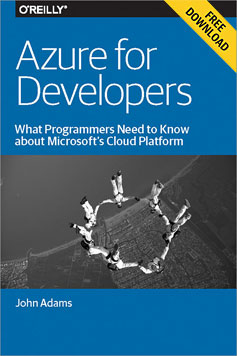
Download Azure for Developers.
Download a free copy of “Azure for Developers,” an O’Reilly report by experienced .NET developer John Adams that breaks down Microsoft’s Azure platform in plain language, so that you can quickly get up to speed.
One of the most natural uses of the cloud is for web applications. You may already be using virtual machines on your own systems to make deploying your applications easier, either to new hardware or to additional servers. Microsoft Azure uses virtualization too, but it also brings useful benefits that virtualization cannot deliver alone. By hosting your application in the cloud, you can leverage automatic scaling, load balancing, system health monitoring, and logging. You also benefit from the fact that managed cloud platforms help narrow the attack surface of your system by automatically patching the operating system and runtimes and by keeping systems sandboxed. Let’s look at some examples of how to build some common web applications inside of Microsoft Azure.
Online store
Imagine that you work for a retailer who generates a significant amount of revenue through online sales. Imagine also that this retailer has been around for long enough that it already has an established web architecture that runs in a private data center. This retailer has decided that it wants to move to a hosted platform so that it no longer has any data center responsibilities and it can focus on its core business. How do you replatform this web application into Microsoft Azure? Let’s first identify some requirements for this system:
- It has high utilization and needs to serve a large number of concurrent users without timing out, even during peak hours such as Black Friday sales.
- It needs to accommodate a wide variety of products in its database that do not necessarily all follow the same schema.
- It needs a fast and intelligent search bar so that customers can find products easily.
- It needs to be able to recommend products to customers as they shop to help generate additional revenue.
However these requirements are being met today in the private data center, I can suggest some guidelines on how to reproduce this system in Microsoft Azure so you can boost performance instead of just replicating it. I will take each of these requirements in order and explain how to leverage certain Azure components so that these requirements are properly met.


Four short links: 15 May 2015
Army Cloud, Google Curriculum, Immutable Infrastructure, and Task Queues
- Army Cloud Computing Strategy (PDF) — aka: “what we hope to do without having done, to use what we’re doing to them.”
- Guide to Technical Development (Google) — This guide is a suggested path for university students to develop their technical skills academically and non-academically through self-paced, hands-on learning.
- Immutable Infrastructure is the Future (Michael DeHaan) — The future of configuration management systems is in deploying cloud infrastructure that will later run immutable systems via an API level.
- machinery — an asynchronous task queue/job queue based on distributed message passing.

From Industrialism to Post-Industrialism
Leveraging the power of emergence to balance flexibility with coherency.
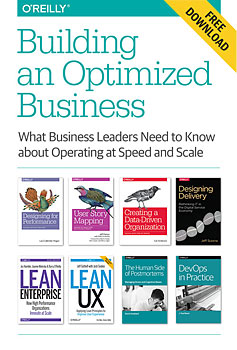
Download
Building an Optimized Business
Download a free copy of Building an Optimized Business, a curated collection of chapters from the O’Reilly Web Operations and Performance library. This post is an excerpt by Jeff Sussna from Designing Delivery, one of the selections included in the curated collection.
In 1973, Daniel Bell published a book called “The Coming of Post-Industrial Society”. In it, he posited a seismic shift away from industrialism towards a new socioeconomic structure which he named ‘post-industrialism’. Bell identified four key transformations that he believed would characterize the emergence of post-industrial society:
- Service would replace products as the primary driver of economic activity
- Work would rely on knowledge and creativity rather than bureaucracy or manual labor
- Corporations, which had previously strived for stability and continuity, would discover change and innovation as their underlying purpose
- These three transformations would all depend on the pervasive infusion of computerization into business and daily life
If Bell’s description of the transition from industrialism to post-industrialism sounds eerily familiar, it should. We are just now living through its fruition. Every day we hear proclamations touting the arrival of the service economy. Service sector employment has outstripped product sector employment throughout the developed world. 1
Companies are recognizing the importance of the customer experience. Drinking coffee has become as much about the bar and the barista as about the coffee itself. Owning a car has become as much about having it serviced as about driving it. New disciplines such as service design are emerging that use design techniques to improve customer satisfaction throughout the service experience.

How to create a Swarm cluster with Docker
Using Docker Machine to create a Swarm cluster across cloud providers.
Problem
You understand how to create a Swarm cluster manually (see Recipe 7.3), but you would like to create one with nodes in multiple public Cloud Providers and keep the UX experience of the local Docker CLI.
Solution
Use Docker Machine to start Docker hosts in several Cloud providers and bootstrap them automatically to create a swarm cluster.

3 easy reasons why you’ll move your business to the cloud
Migrating to cloud-native application architectures leads to innovation.
Editor’s note: this is an advance excerpt from Chapter 1 of the forthcoming Migrating to Cloud-Native Application Architectures by Matt Stine. This report examines how the cloud enables innovation and the changes an enterprise must consider when adopting cloud-native application architectures.
Let’s examine the common motivations behind moving to cloud-native application architectures.
Speed
It’s become clear that speed wins in the marketplace. Businesses that are able to innovate, experiment, and deliver software-based solutions quickly are outcompeting those that follow more traditional delivery models.
In the enterprise, the time it takes to provision new application environments and deploy new versions of software is typically measured in days, weeks, or months. This lack of speed severely limits the risk that can be taken on by any one release, because the cost of making and fixing a mistake is also measured on that same timescale.
Internet companies are often cited for their practice of deploying hundreds of times per day. Why are frequent deployments important? If you can deploy hundreds of times per day, you can recover from mistakes almost instantly. If you can recover from mistakes almost instantly, you can take on more risk. If you can take on more risk, you can try wild experiments—the results might turn into your next competitive advantage.
The elasticity and self-service nature of cloud-based infrastructure naturally lends itself to this way of working. Provisioning a new application environment by making a call to a cloud service API is faster than a form-based manual process by several orders of magnitude. Deploying code to that new environment via another API call adds more speed. Adding self-service and hooks to teams’ continuous integration/build server environments adds even more speed. Eventually we can measure the answer to Lean guru Mary Poppendick’s question, “How long would it take your organization to deploy a change that involves just one single line of code?” in minutes or seconds.
Imagine what your team… what your business… could do if you were able to move that fast!


Four short links: 23 February 2015
Self-Assembling Chairs, Home Monitoring, Unicorn Horn, and Cloud Security
- MIT Scientists and the Self-Assembling Chair (Wired) — using turbulence to randomise interactions, and pieces that connect when the random motions align. From the Self-Assembly Lab at MIT.
- Calaos — a free software project (GPLv3) that lets you control and monitor your home.
- Founder Wants to be a Horse Not a Unicorn (Business Insider) — this way of thinking — all or nothing moonshots to maximise shareholder value — has become pervasive dogma in tech. It’s become the only respectable path. Either you’re running a lowly lifestyle business, making ends meet so you can surf all afternoon, or you’re working 17-hour days goring competitors with your $US48MM Series C unicorn horn on your way to billionaire mountain.
- Using Google Cloud Platform for Security Scanning (Google Online Security) — platform vendors competing on the things they can offer for free on the base platform, things which devs and ops used to have to do themselves.

